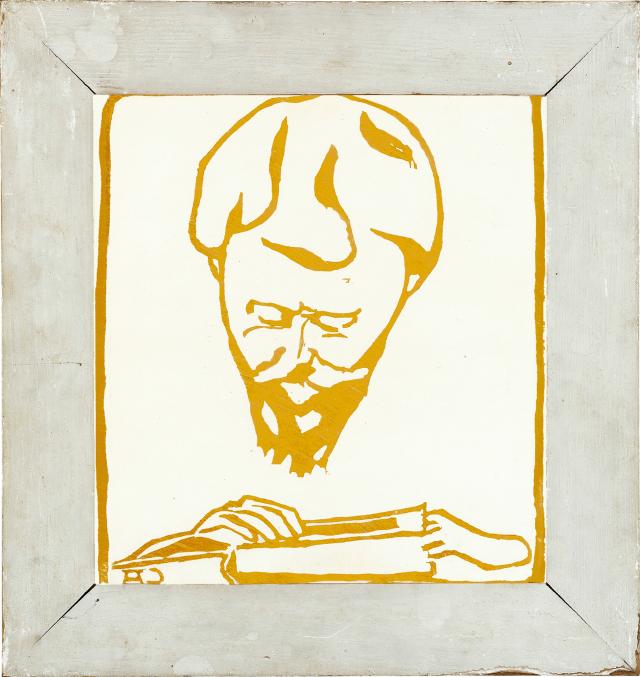The Ticinese painter Giovanni Giacometti is a close friend of Cuno Amiet’s. The two artists meet while studying in Munich and set off together for Paris to continue their studies there. Cuno’s first show at the Salon de Paris of 1889 features a portrait of Giovanni. Lifelong friends, they are also together for basic training during their military service and for vacations in the Canton of Ticino. They put together joint exhibitions as well, in Zurich with Ferdinand Hodler (1898), at the Paris World Fair (1900), in Dresden (1908), Munich (1910, 1913) and at Zurich’s Kunsthaus as part of a group show (1917). It is Giovanni’s death in 1933 that finally separates the two, but Cuno remains connected with the family since he is the godfather of Alberto Giacometti, Giovanni’s son, born thirty-two years earlier, and the now-famous Swiss painter and sculptor.
At the invitation of the members of Die Brücke (founded in Dresden by Fritz Bleyl, Ernst Ludwig Kirchner, Erich Heckel and Karl Schmidt-Rottluff), Amiet joins the artists’ association in 1906. The following year he takes part in the group’s second portfolio with his wood engraving Giovanni Giacometti beim Lesen (Giovanni Giacometti Reading). Amiet had been introduced to engraving in the late 1890s by the Breton Armand Seguin. Once back in Switzerland, Amiet revives wood engraving, making it possible for the technique to recapture its former glory in the field of art. The resurgence of interest in wood engraving goes hand in hand with the renewed interest in traditional crafts and the applied arts that occurs at the turn of the century. Artists like Gauguin, Munch, or members of Die Brücke like Kirchner and Heckel, opt for the technique because of its vernacular roots. Using a simplified line, Amiet chooses here to portray only the face and book of his friend as if to express the subject’s complete concentration on his reading. A similar irregular line that is both ample and energetic frames the composition. It partakes of the clean ornamental aspect that is displayed in this composition. On the lower left, Amiet’s initials appear in reverse, a reminder that any printed proof in the end shows the left-to-right opposite of what the artist has worked on the plate in the studio.
At the invitation of the members of Die Brücke (founded in Dresden by Fritz Bleyl, Ernst Ludwig Kirchner, Erich Heckel and Karl Schmidt-Rottluff), Amiet joins the artists’ association in 1906. The following year he takes part in the group’s second portfolio with his wood engraving Giovanni Giacometti beim Lesen (Giovanni Giacometti Reading). Amiet had been introduced to engraving in the late 1890s by the Breton Armand Seguin. Once back in Switzerland, Amiet revives wood engraving, making it possible for the technique to recapture its former glory in the field of art. The resurgence of interest in wood engraving goes hand in hand with the renewed interest in traditional crafts and the applied arts that occurs at the turn of the century. Artists like Gauguin, Munch, or members of Die Brücke like Kirchner and Heckel, opt for the technique because of its vernacular roots. Using a simplified line, Amiet chooses here to portray only the face and book of his friend as if to express the subject’s complete concentration on his reading. A similar irregular line that is both ample and energetic frames the composition. It partakes of the clean ornamental aspect that is displayed in this composition. On the lower left, Amiet’s initials appear in reverse, a reminder that any printed proof in the end shows the left-to-right opposite of what the artist has worked on the plate in the studio.
